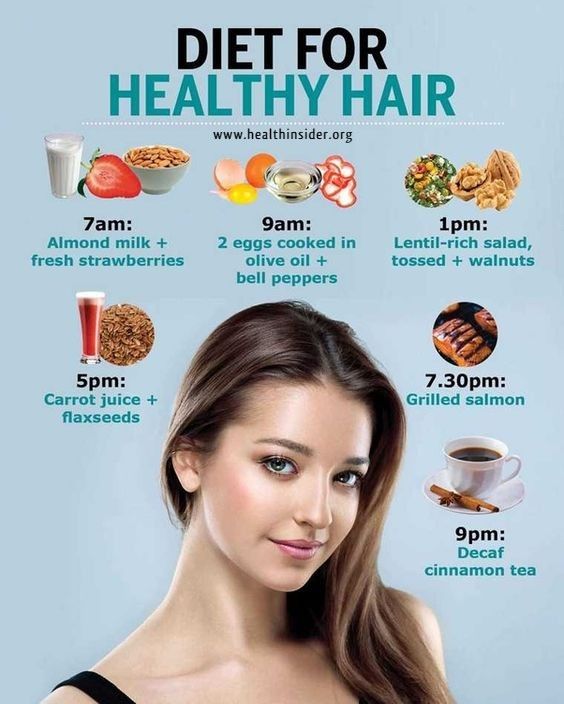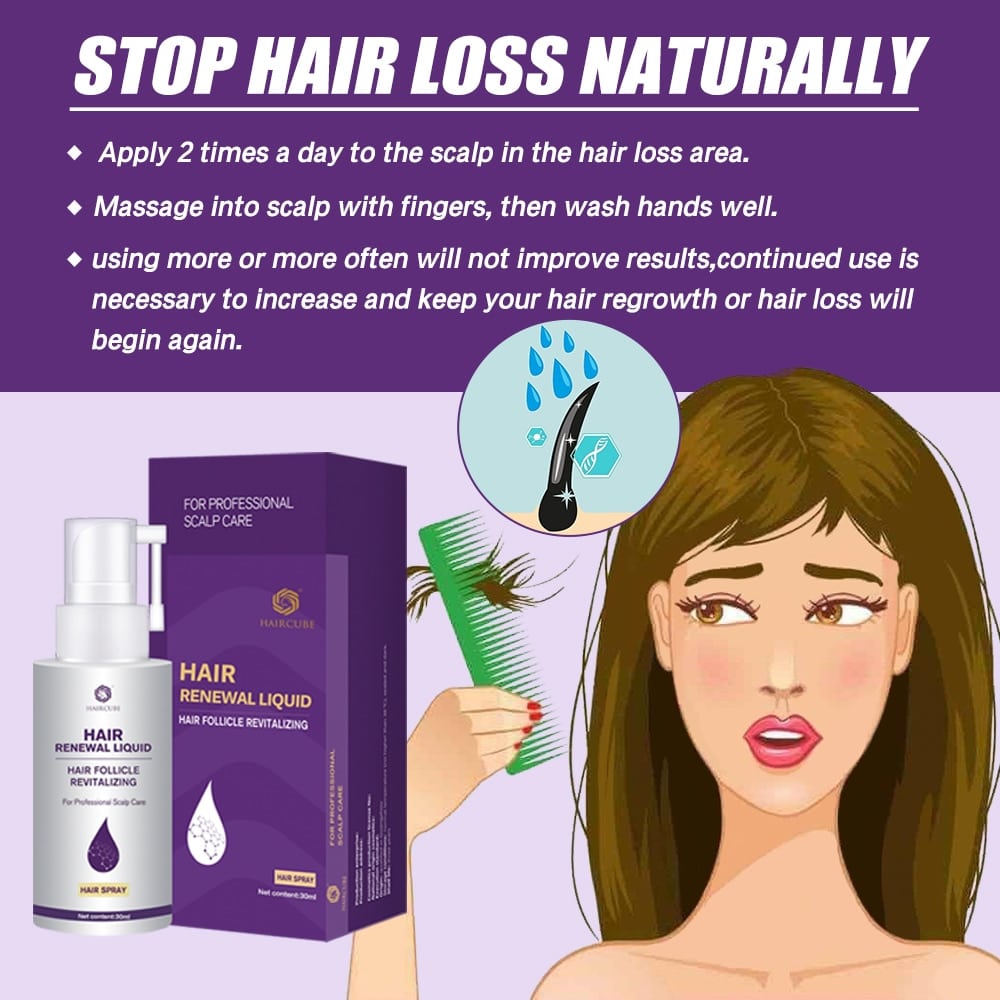You Have To Be Realistic
This is a routine to keep existing hair. While there is evidence that some people have regrowthand it can be quite significant in some casesits better to assume that youll be a case of someone who merely stops hair loss and experiences a low/moderate amount of regrowth.
If youre at Norwood stage 5, then you cant expect this protocol to get you back to a full head of hair. It can, however, stop things from getting worse and it might give you significant regrowth.
What Are The Types Of Hair Loss
Some types of hair loss are permanent, while others are temporary. The most common types of hair loss include:
- Androgenic alopecia: This type of hereditary baldness can affect anyone .
- Alopecia areata: Alopecia areata is an autoimmune disease that results in hair loss from the head and body.
- Telogen effluvium: This type of hair loss involves rapid shedding of hair in a short amount of time. It typically happens a few months after your body goes through something physically or emotionally stressful. It can also result from sudden hormonal changes.
- Anagen effluvium: This very rapid hair loss occurs due to certain medical treatments, such as chemotherapy.
Can Thinning Hair Grow Back
Thinning hair can grow back depending on what caused it to thin in the first place. Individuals who experience thinning hair due to nutrient deficiencies, stress, pregnancy, and other non-genetic reasons could experience regrowth.
If youre experiencing new hair loss or hair thinning, its best to consult your doctor. Some medical conditions can be associated with thinning hair.
Also Check: Are There Any Real Hair Loss Solutions
How Is Hair Loss Diagnosed
In some cases, the cause of hair loss is obvious for example, if you’re losing hair while going through chemotherapy. Other times, your healthcare provider will need to do some detective work to figure out whats causing your hair loss.
To determine the correct diagnosis, your provider may:
- Ask about your family history, including if any relatives experienced hair loss and at what age.
- Look at your medical history.
- Order blood tests to measure thyroid function and iron levels.
- Examine your scalp for signs of infection.
- Take a scalp biopsy to check for skin disease.
What Are The Complications Of Hair Loss

Losing your hair whether the hair loss is temporary or permanent can be emotionally difficult for many people. Some types of hair loss can eventually lead to baldness.
If you lose significant hair, its important to protect your scalp. Wear a hat, scarf or other head covering when youre in the sun, and apply sunscreen daily. Sun exposure increases the risk of skin cancer.
Read Also: How To Cure Hair Loss Naturally
How To Prevent Hair Loss During Chemo
Chemotherapy works by attacking cancer cells in your body. As a side effect, chemotherapy kills the cells that make your hair grow. Hair usually begins falling out within 2 to 4 weeks after treatment.
Some people choose to prepare for this side effect by shaving their hair off before treatment starts. Many people are more comfortable with this choice. But not everyone who undergoes chemotherapy will lose all of their hair as a result. Sometimes hair simply thins out or recedes.
You may also ask your doctor about scalp cooling treatments. These treatments, which include a scalp cooling cap, slow blood flow to your scalp during treatments. While its not completely effective, scalp cooling can help you retain more of your hair. The average cost is about
Here are the answers to common hair loss questions.
Best Foods To Stop Hair Loss
If you’re older than fifteen, the era of your thickest hair has come and gone. From now on, the name of the game is to keep as much of that stuff on your head.
Although the causes of hair loss are many including genetics, age, hormones, nutrient deficiencies, toxicity, medications, and autoimmunity changing your diet can, in many cases, be helpful. “Proper diet and supplements can slow or reverse hair loss, and make the hair thicker and healthier,” says nutritionist Joseph Debé, DC, CDN, CCSP.
Below are 17 nutrient-rich foods that have been shown to keep hair healthy and full. And while we’re on the subject of aging, you won’t want to miss our exclusive report: 30 Foods You Should Never Eat After Age 30.
Also Check: How To Curl Fine Thin Hair
Follow The Mediterranean Diet
Eating fruits, vegetables and protein the main ingredients in the Mediterranean diet can be helpful, especially compared to other trendy diets.
When you go on these restrictive diets, you may lose weight but its probably something you cant maintain, says Dr. Bergfeld. And theyre usually lacking in something that your hair follicles need.
Can Hair Loss Be Reversed
Yes and no. It depends on what type of hair loss youre experiencing.
Some types, like cicatricial alopecia, are permanent, while others that may be caused by stress or a medical condition are temporary. Once the cause has been identified and eliminated, your hair should start growing back.
Generally speaking, if the trigger goes away or whatever caused the injury to the hair follicle, then the hair will recover over a period of four to six months to a year, says Dr. Bergfeld.
Read Also: Does Prolia Cause Hair Loss
Do Hair Transplants Help Hair Loss
Hair transplants involve taking hair from one area of the scalp and transplanting it into an area thats thin or bald.
Transplants may be successful for some people depending on the cause of hair loss. But youll need enough hair to donate to the transplant, and youll need to wait several months for it to grow.
You can expect of transplanted hair to grow back in 3 to 4 months. Talk with a dermatologist or hair restoration specialist to see if a hair transplant is right for you.
How To Stop Thinning Hair: Hair Loss Treatment For Women
Medications are the most common treatment for hair loss in women. They include the following:
Minoxidil . This drug was initially introduced as a treatment for high blood pressure, but people who took it noticed that they were growing hair in places where they had lost it. Research studies confirmed that minoxidil applied directly to the scalp could stimulate hair growth. As a result of the studies, the FDA originally approved over-the-counter 2% minoxidil to treat hair loss in women. Since then a 5% solution has also become available when a stronger solution is need for a woman’s hair loss.
Clearly, minoxidil is not a miracle drug. While it can produce some new growth of fine hair in some not all women, it can’t restore the full density of the lost hair. It’s not a quick fix, either for hair loss in women . You won’t see results until you use the drug for at least two months. The effect often peaks at around four months, but it could take longer, so plan on a trial of six to 12 months. If minoxidil works for you, you’ll need to keep using it to maintain those results. If you stop, you’ll start to lose hair again.
Some women find that the minoxidil solution leaves a deposit that dries and irritates their scalp. This irritation, called contact dermatitis, is probably caused not by the minoxidil itself, but rather by the alcohol that is included to facilitate drying.
Read Also: How To Tie Hair To Prevent Hair Loss
Is All Hair Loss Preventable
According to Mayo Clinic, the majority of baldness is caused by genetics, usually known as male-pattern baldness and female-pattern baldness, and cannot be prevented. This type of hair loss is called androgenic alopecia, which is a genetic condition. While androgenic alopecia cannot be prevented, it can be treated and its progression can be slowed.
âAndrogenic alopecia can start at any age. Unfortunately, by the time hair loss is noticeable 50 percent of hairs have already fallen from the scalp. The earlier you begin treatment, the more effective non-surgical treatments can be,â Matthew Lopresti, MD, chief surgeon at Leonard Hair Transplant Associates says.
Alopecia areata is also a genetic disease and usually first appears during childhood. The good news is that when someone has alopecia areata, their hair can grow back even after it has fallen out. So while hair loss from alopecia areata cannot be prevented, it can be treated. According to the National Alopecia Areata Foundation, your hair follicles remain alive even during active periods of alopecia areata and you can experience hair regrowth even if you have already lost more than 50 percent of your hair.
If your hair loss is not due to a genetic condition, itâs likely that it can be prevented. According to NYU Langone Health, hair loss from stress, menopause, pregnancy, smoking, or other lifestyle or medical conditions can be prevented and sometimes even reversed once it starts happening.
Treatment For Other Causes Of Hair Loss

If a disease, medicine, or stress is the cause of hair loss, then treating the disease, changing medicines, or managing stress may stop the hair loss. And your hair is likely to grow back. For example, if an underactive thyroid is causing the problem, taking thyroid medicine may help. And most hair lost during chemotherapy will grow back after the treatment ends.
If alopecia areata is the cause of hair loss, medicines such as corticosteroids can be used to treat it. But because hair often grows back within a year, you may decide not to have treatment. Understanding the come-and-go nature of hair loss with this condition can help you make the best treatment decision. Children and teens may need counseling to help them adjust to the hair loss.
Don’t Miss: How To Help Female Thinning Hair
Reduce Concentrations Of Dht And Inflammation In The Scalp
We dont want to reduce the amount of DHT circulating by using drugs. The side effects are well documented. If you have to take the medication for issues related to your prostate, ignore everything Im saying here. This should go without saying, but let me cover my ass : this is not medical advice. Im not a doctor. Im just a dude who likes keeping his hair and has discovered some things that work.
We also need to combat inflammation. This means dealing with the causes of the inflammation response. Keep in mind that inflammation is a natural response the body has to injury or pathogen to protect you. Therefore, well be dealing with the pathogens that are causing the inflammatory response.
So, our first goal is to reduce DHT concentration in the scalp and to do so WITHOUT disrupting our hormone profile. This means topical treatments. Your topical regime will take place with 3 weapons: shampoo, ointment/gel, and topical finasteride/minoxidil:
The Role Of Inflammation And Fungus In Male Pattern Baldness
DHT gets all the attention for male pattern baldness , so many people are completely unaware of inflammations role in hair loss. We know from research like this that inflammation plays a significant role in hair loss.
In that research, the majority of scalp samples had elevated levels of lymphocytes, histiocytes, mast cells, and CD4 t cells. The presence of these all signify that a significant part of losing hair is the collateral damage between your immune system and fungus and microbes in the environment.
If youve never heard this before, it might sound far fetched, but the main cause of dandruff is not actually dry skin. Its a fungus known as malassezia and it exists on the scalp of most adults. Now, if most people have this fungus on their scalp but not everyone suffers from a receding crown or temples, then whats going on here?
Well, its not exactly that fungus but its some fungus. And we know that by treating the scalp with antimicrobials and antifungals, we promote hair regrowth and a decrease of the markers of inflammation. From this study on treatment with antimicrobial and antifungal lotion:
Also Check: Can An Endocrinologist Help With Hair Loss
Why Your Hair Is Falling Out
You might start seeing more hair loss than normal thanks to the following:
- Hormonal changes like pregnancy or menopause.
- Certain hairstyles.
- Damaging haircare like perms or bleaching.
- Medications like chemotherapy.
- Medical conditions like fungal infections or thyroid disease.
Working with a dermatologist, you can begin identifying what might be causing your hair loss. Your doctor will ask about your health, your medications and your family history.
I tell the patients to keep track of events that are unusual for them, for instance, a heavy menstrual period, says Dr. Bergfeld. So when we go back to look for triggers, well have some hint at what it could be.
Your doctor will also look at other areas on your body like your eyebrows, lashes, underarms, pubic area, legs and arms to assess if theres hair loss.
Many times, hair loss is an indicator that something more serious is going on.
Hair loss, particularly shedding, is just a sign that something has happened to the body, says Dr. Bergfeld. The hair follicle is one of the three fastest turning over cell lines in your body. Anything that affects your body and throws it out of balance will affect those systems. So shedding hair is an indicator that somethings wrong.
How Is Hair Loss Treated
If your hair loss results from medication, hormonal imbalances, thyroid disease or diet, your provider will address the cause. Correcting the underlying problem is often all thats needed to help stop hair loss.
Most hair loss treatments are meant to help with androgenic alopecia . These treatments include:
- Medication: Over-the-counter medications you apply to your scalp are usually the first course of treatment for thinning hair. A prescription oral medication is approved only for men with male pattern baldness.
- Hair transplant: During a hair transplant, your provider carefully removes strands of hair from an area of your scalp where the hair is thickest. The provider then transplants those strands, embedding them into your scalp where your hair is thinnest.
- Platelet-rich plasma : After drawing your blood, your provider separates out the plasma. They then inject this platelet-rich plasma into your scalp. PRP treatment can help slow hair loss and encourage new hair growth.
Don’t Miss: Does Truvada Cause Hair Loss
When Its Something Else
Sometimes hair loss can be a symptom of a more serious illness or nutritional deficiency. Thats one of the reasons why its so important to talk to a licensed physician about any significant shedding. Theyll evaluate your medical history, as well as your hair loss, to make sure everything is okay.
Q Is A Hair Plant Advisable In Case Of Balding
A. Having a natural mop of hair post hair transplant is not something that happens instantly. It takes around 6 months for the roots to take. Along with this, there are complications associated with the recovery period. Its best to consult a trichologist regarding this as only after a full check-up you can understand whether this procedure is needed or not.
Dont Miss: How To Make Thin Hair Thicker And Fuller
Read Also: Does Depression Cause Hair Loss
Healthy Fats Key Nutrients To Hair Growth
6. Walnuts
Walnuts are known as hair food because they contain omega-3 fatty acids nutrients essential for healthy and luscious hair. They are also rich in protein and macro minerals that are important for hair growth .
Walnuts also contain zinc, iron, selenium, and vitamins B1, B6, and B9, which stimulate hair growth and reduce hair fall. They also contain biotin, vitamin E, protein, and magnesium that strengthen the hair and maintain scalp health. The deficiency of these vitamins and minerals leads to hair loss .
7. Almonds
Almonds are rich in magnesium, selenium, protein, unsaturated fatty acids, and vitamins . Studies have shown that magnesium acts as a co-factor of different metabolic reactions that stimulate hair follicles , . Consume 4-5 soaked almonds daily to strengthen the hair and maintain healthy hair growth.
8. Seeds
Seeds, especially sunflower seeds, are rich in beta-sitosterol that is effective in preventing androgenetic alopecia and promotes healthy hair growth , .
A study in the Journal of Alternative and Complementary Medicine showed that 5-alpha-reductase inhibitors, especially saw palmetto extracts and beta-sitosterol, help in the treatment of androgenic alopecia .
Flax seeds are rich sources of omega-3 fatty acids and an alternative to marine products . A study on rhesus monkeys shows that omega-3 fatty acids improve the hair coat and prevent premature hair loss .
Also Check: What Causes Sore Scalp And Hair Loss
Does Caffeine Stop Hair Loss

Theres some research that caffeine may help hair growth and slow loss.
An older 2007 study found that caffeine blocked the effects of dihydrotestosterone in male hair follicles. DHT is a hormone thats linked to hair loss in all genders.
The caffeine also boosted hair root width and prolonged the growth phase of hair. When tested on female hair follicles, it also had a growth-promoting effect.
Because its a vasodilator, caffeine may also help improve blood flow to the scalp, promoting hair growth.
You can make your own coffee rinse for hair or buy caffeine shampoo.
Don’t Miss: What Shampoo Is Best To Prevent Hair Loss
What Shampoo Should I Use For Thinning Hair
Because thinning hair can happen for a number of different reasons, you might have to go through a trial-and-error period to find the shampoo that works best for you.
Some shampoos are aimed at reducing hair loss, while others aim to thicken existing hair.
Prescription-strength shampoo for thinning hair is also an option that you can speak with your doctor about.